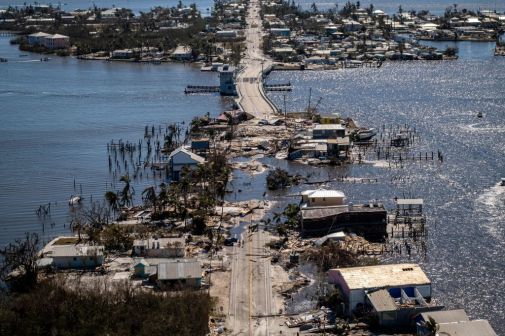NOAA partners with 3 big cloud providers to disperse environmental data

The National Oceanic and Atmospheric Administration entered into multiyear cloud contracts with Amazon Web Services, Google Cloud and Microsoft to better manage its environmental data.
NOAA’s systems — including satellites, radars, ships and weather models — generate tens of terabytes of data daily. Cloud storage will allow NOAA to more easily share that data with universities to promote research and industry to develop innovative solutions.
“NOAA’s wealth of world-class environmental data will now be more accessible through partnerships with commercial cloud providers, which will allow the agency to better manage a rapidly increasing volume of data going forward,” Neil Jacobs, acting NOAA administrator, said in an announcement.
Real-time satellite imagery, 20 years of National Water Model, historic storm event, aggregated lightning strike, more than 300 years of precipitation, and more than 400 years of shipping pattern data are all available.
Part of the Big Data Project, which began in April 2015, the public-private partnerships further NOAA’s efforts to link in-house environmental data and expertise with Infrastructure-as-a-Service for scalable, real-time analysis as lower costs.
All three cloud providers will charge for processing, egress of user-owned data and other services tied to processing additional data but must provide free and open access, unlike with large-value contract awards.
NOAA environmental data is now available as part of the Google Cloud Public Datasets Program with plans to eventually host 5 petabytes of data across products like BigQuery, Cloud Storage, Google Earth Engine, and Kaggle.
Previously, Google has used NOAA data to identify humpback whale calls, and now it can help detect wildfires earlier, forecast retail sales, manage fleet logistics, analyze bird migrations, and mitigate and respond to natural disasters in real-time.
Similarly, AWS hosts a variety of both atmospheric and oceanic data sets on its Registry of Open Data, and will continue to add to that through this new agreement.
Microsoft also already hosts the agency’s most important weather data on Azure Open Datasets, as well as results from camera trapping and hydrophones projects to more accurately count animal populations.
Cloud providers previously worked with NOAA under cooperative research and development agreements in the BDP pilot phase, before three were selected through a spring 2019 request for proposal.
The Big Data Project meets a Department of Commerce 2018-2022 strategic plan priority to reduce extreme weather impacts through industry partnerships and supports the Federal Data Strategy.
“This approach will help spur new lines of business and economic growth while making NOAA’s data more easily accessible to the American public,” said Ed Kearns, acting chief data officer at DOC, in a statement.






